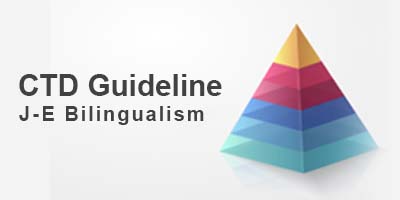
薬生薬審発0202第1号(平成29年2月2日)
ICH HARMONISED GUIDELINE- M4E(R2) – Dated 15 June 2016
Module 2.5 臨床に関する概括評価
2.5.6 ベネフィットとリスクに関する結論
序文
本項の目的は、申請医薬品の目的とする適応症におけるベネフィット・リスク評価について、簡潔、総合的かつ明確な説明を提示することである。ベネフィット・リスク評価は、申請医薬品の主要なベネフィットと主要なリスクのバランスに基づくものである。主要なベネフィットは、通常、医薬品開発における臨床試験を通じた主要評価項目及び他の臨床的に重要な評価項目により評価される好ましい効果であり、主要なリスクは、その頻度や重症度の観点から、臨床的に及び/又は公衆衛生上重要な好ましくない効果である。主要なベネフィット及び主要なリスクの特定には、申請医薬品に関連するすべての有効性及び安全性情報の批判的評価が必要である。必ずしもすべてのベネフィット及びリスクが主要なベネフィット及び主要なリスクとなるわけではない。既承認医薬品のベネフィット・リスク評価については ICH E2C(R2)ガイドライン(定期的ベネフィット・リスク評価報告:PBRER)で記載されており、主要なベネフィット及び主要なリスクの概念は同様に使用されている。
Module 2.5 CLINICAL OVERVIEW
2.5.6 Benefits and Risks Conclusions
Preamble
The purpose of this section is to provide a succinct, integrated, and clearly explained benefitrisk assessment of the medicinal product for its intended use. The benefit-risk assessment is based on a weighing of the key benefits and key risks of the medicinal product. Key benefits are favourable effects generally assessed by primary and other clinically important endpoints across the studies in a development program; key risks are unfavourable effects that are important from a clinical and/or public health perspective in terms of their frequency and/or severity. The identification of the key benefits and key risks of a product requires a critical evaluation of the entirety of the efficacy and safety information regarding the medicinal product. Not all benefits and risks will necessarily be considered key benefits and key risks. Subsequent benefit-risk assessments of approved products are the subject of the ICH E2C(R2) (Periodic Benefit-Risk Evaluation Report: PBRER) guideline, which similarly uses the concepts of key benefits and key risks.
本項を記載するにあたり、以下の点について検討すること。
- 2.5.6 項においては、ベネフィット・リスク評価に最も関連する治療の背景、ベネフィット及びリスクについて記載すること。本項における不必要な繰り返しを避けるために、より詳細に記載されている申請資料中の他の項を参照すること。
- 申請医薬品について複数の適応症を申請する場合、申請者は各項においてそれらをまとめて論じるべきか、分けて論じるべきかを考える必要がある。各適応症について分けて論じる場合、各サブセクションを適応症ごとに記載すること(例:2.5.6.1 肺炎、2.5.6.1 上気道感染と表示する)。
- 申請医薬品のある特徴がベネフィット又はリスクのいずれにおいても記載可能な場合があるが、両方の項に記載しないこと。
- ベネフィット及びリスクのデータは、異なる集団における複数の情報源から得られる場合もある。適切な場合には、それらの集積した結果を提示することができる。申請者はどのようにしてこれらの異なる情報源を取り扱ったかを説明すること(例えば、特定の試験の除外、併合手法)。
- 申請医薬品の目的とする適応症の対象となる患者集団が試験対象集団と異なる場合(例えば、エンリッチメント法が採用された場合)、申請医薬品の目的とする適応症の対象となる患者集団のベネフィット・リスク評価を提示すること。
- 治療の背景、ベネフィット、リスク及びベネフィット・リスク評価を記載する際に、患者視点*1の情報を考慮できる。
- 申請者の判断で、ベネフィット・リスク評価の結果に加え、主要なベネフィット及び主要なリスクの臨床的な重要性を示すために要約表や図を用いることができる。
*1 患者視点の情報は、治療の背景、ベネフィット及びリスクに関する患者の意向及び選好を示す。このような情報は、定性的、定量的又は記述的手法を用いて、患者から直接的に、又は他の利害関係者(たとえば、親、介護者)から間接的に得られる場合がある。この情報の詳細な資料は、第 5 部に添付すること。
The following points should be considered when completing this section:
- The aspects of the therapeutic context, benefits, and risks in the subsequent sections most pertinent to the benefit-risk assessment should be discussed in Section 2.5.6. References to more detailed information presented elsewhere in the application should be used to avoid unnecessary repetition in this section.
- If multiple indications are proposed for the medicinal product, the applicant should consider whether to discuss them separately or together in the appropriate sections. Where indications are discussed separately, a separate section should be provided for each indication using headings (e.g., 2.5.6.1 Pneumonia and 2.5.6.1 Upper Respiratory Infection).
- In some cases, certain effects of the medicinal product may reasonably be described under either benefits or risks, but they should not be discussed as both.
- Data on benefits and risks may arise from multiple sources across different populations. Presentations of the aggregated results may be provided, if appropriate. The applicant should explain how the various data sources were handled (e.g., exclusion of particular studies, pooling strategy).
- For situations where the intended population differs from the study population (e.g., where enrichment strategies have been employed), the benefit-risk assessment should be presented for the intended population.
- Information about the patient perspective*1 may be considered when describing the therapeutic context, benefits, risks, and the benefit-risk assessment.
- Applicants may, at their discretion, use summary tables or graphical displays to communicate the clinical importance of the key benefits and key risks, as well as the resulting benefit-risk assessment.
*1 Patient perspective information describes the attitudes and preferences of patients with respect to the therapeutic context, benefits, and risks. Such information may be obtained directly from patients or indirectly from other stakeholders (e.g., parents and caregivers) using qualitative, quantitative, or descriptive methods. The detailed presentation of this information, if available, should be submitted in Module 5.










